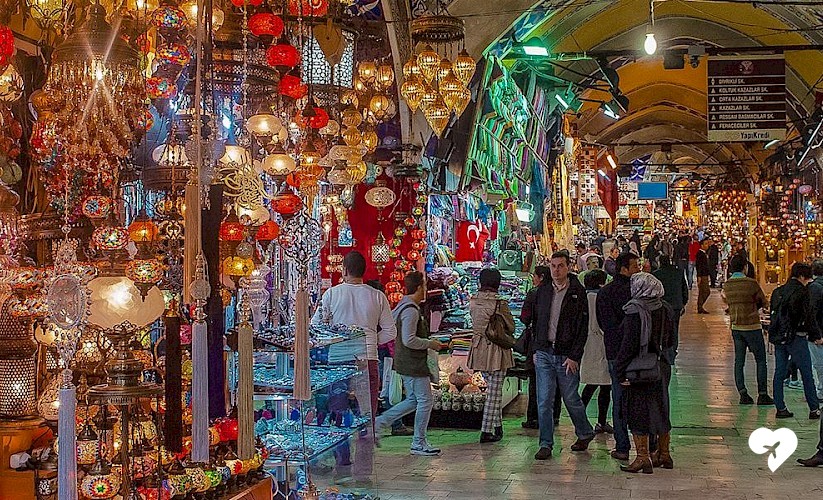The Grand Bazaar is situated in İstanbul, the biggest city of Turkey, and its history goes back to mid-15th century, the era of Sultan Mehmet II, the Conqueror. The waqf system (the charitable trust of Islamic law) has been the mainstay of public institutions of the Ottoman era by creating an income stream to meet the repair and maintenance expenses of public institutions, such as mosques, through income generating assets endowed for that purpose. The most important income generating assets were the covered markets or bazaars. The foundations of the building endowed to generate income for the upkeep of Ayasofya Mosque was laid by Sultan Mehmet the Conqueror in 1461, and it formed the basis of the present day Grand Bazaar which has been enlarged over the ages by adding extensions to the core building. Gradually it became the most important commercial centre of the region, and the richest merchants of İstanbul formed their trading houses there to deal with gems and jewellery coming from the far corners of the earth, and the Grand Bazaar assumed the role of banking and finance centre of İstanbul. In the eyes of the Europeans it represented İstanbul and the Orient at its best, therefore many travel books described it in detail and many artists drew or painted scenes of it. That is a testament to the cultural and historical importance of the Grand Bazaar.
Enjoy Shopping in an Historic and Astonishing Space
The Grand Bazaar is renowned as the oldest and largest shopping centre of the world, and it houses 3,600 shops over a 45 thousand square metres (11.2 acres) of covered space. During its peak in the Ottoman era, the extent of covered area and the number of shops were far greater than today’s numbers. The Grand Bazaar was the hub of Ottoman economy and today it is the first choice for shopping for those visiting İstanbul. Some days the number of visitors reaches half a million. It is possible to shop for everything, carpets, handbags, textiles, gold and silver jewellery, antiques, and glazed chinaware, and many other handcraft souvenirs that would remind you, the pleasant memories of your visit to Turkey. You would find out that some of the shops you visit have been selling the same goods centuries ago with the same trading culture. Who knows, maybe one of your ancestors has visited İstanbul, probably the most prominent city for the visitors of the old world then, and shopped in the same shops you are visiting.

Even if you spare a whole day to visit the Grand Bazaar, where traditional meets modern as happens everywhere in İstanbul, its sheer size makes it almost impossible to see everything in one day. While you can find traditional wares inspired from the Ottoman era in the Grand Bazaar, you would find many contemporary goods too. There are also many other shopping options around the Grand Bazaar. The road stretching between the Grand Bazaar and the Nur-u Osmaniye Mosque is where you would find the sellers of finest carpets as well as other oriental goods. Right behind the Blue Mosque (or Sultan Ahmet Mosque), the Arasta Market is where you would find handcrafted souvenirs. There are also other shopping venues around the Sultanahmet area where handcrafted souvenirs as well as other diverse products. The enthusiasts of old books visiting the Sahaflar Market located between the Grand Bazaar and Beyazıt Mosque is a must.
How to Go?
The Grand Bazaar is open for business except Sundays and religious holidays between 08.30 am and 07.00 pm. It is situated at a central location of İstanbul, in the Beyazıt Neighbourhood of Fatih County, and it is in close proximity of Süleymaniye Mosque and Beyazıt Square. The municipal busses and tram lines serve the area, and they also provide transfers to interconnected transport of system of İstanbul combining bus lines, metro lines, rail lines, and cross-Bosporus ferries. The stop to alight busses is Beyazıt Square, and two successive tram stations, the Çemberlitaş station and the Beyazıt-Grand Bazaar station, provide access to different entrances of the Grand Bazaar.
